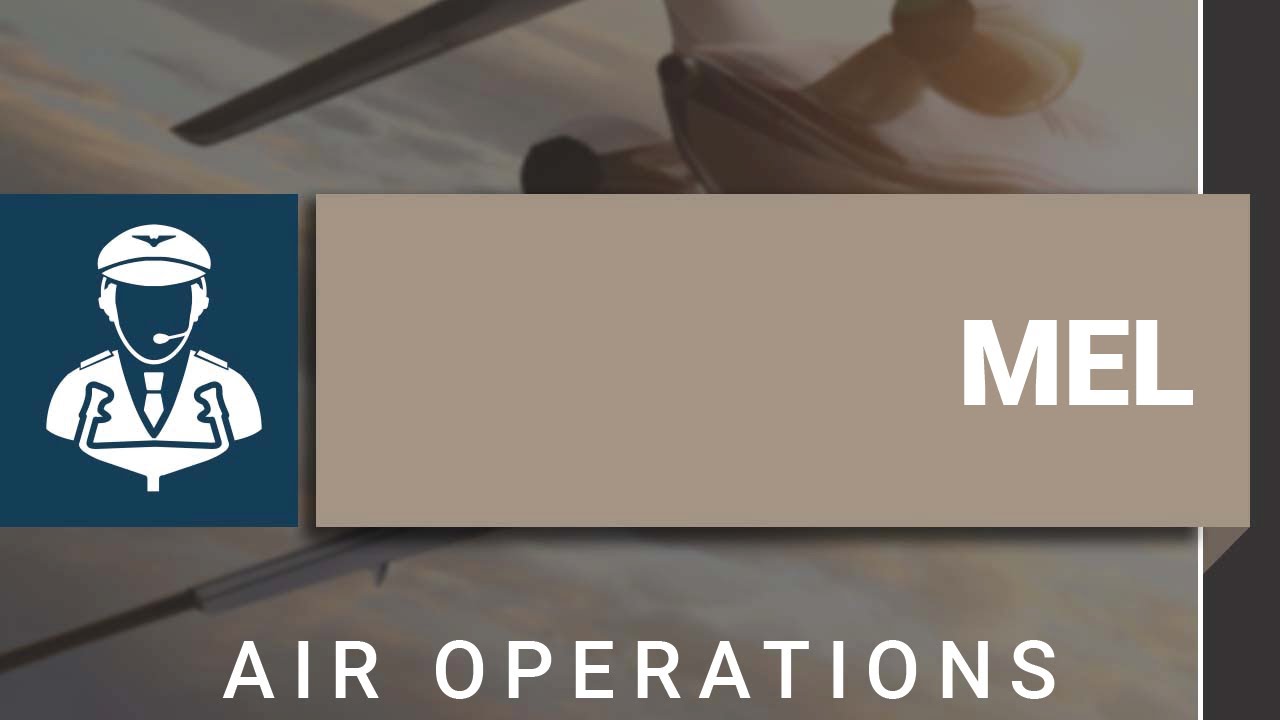A Deep Dive into Minimum Equipment Lists (MEL) for Aircraft
In aviation, safety is the highest priority, and aircraft are built with numerous systems to ensure safe operations. However, certain non-essential equipment or components may become inoperative without compromising flight safety. This is where the Minimum Equipment List (MEL) plays a crucial role. MEL is a document that specifies which equipment may be inoperative for a flight to remain legal and safe.
Introduction
In aviation, safety is the highest priority, and aircraft are built with numerous systems to ensure safe operations. However, certain non-essential equipment or components may become inoperative without compromising flight safety. This is where the Minimum Equipment List (MEL) plays a crucial role. MEL is a document that specifies which equipment may be inoperative for a flight to remain legal and safe.
Understanding the MEL system helps airline operators, pilots, and maintenance personnel make informed decisions regarding aircraft operations. In this blog, we will take a deep dive into MEL, exploring its importance, regulatory requirements, and how it affects daily flight operations.
What is a Minimum Equipment List (MEL)?
A Minimum Equipment List (MEL) is an approved document that allows an aircraft to operate with specific inoperative equipment under certain conditions.
The MEL is created based on the Master Minimum Equipment List (MMEL), which is developed by the aircraft manufacturer and approved by regulatory authorities.
It ensures that even if some non-essential systems are not functioning, the aircraft can still operate safely without compromising overall flight safety.
Every airline or aircraft operator customizes their MEL based on regulatory guidelines and their specific operational requirements.
MEL is an essential tool that helps maintain operational flexibility while ensuring compliance with aviation safety standards.
Why is MEL Important in Aviation?
The MEL provides significant benefits in aviation operations, ensuring that safety is not compromised while allowing for efficient flight scheduling.
Ensures Safe Operations: It ensures that an aircraft with minor inoperative equipment can still meet safety requirements before departure.
Reduces Flight Delays and Cancellations: Without an MEL, an aircraft might be grounded for minor defects, leading to unnecessary delays. MEL allows flights to continue safely.
Compliance with Regulations: Aviation authorities such as the FAA (Federal Aviation Administration), EASA (European Union Aviation Safety Agency), and DGCA (Directorate General of Civil Aviation) mandate MEL compliance to ensure safety.
Cost Efficiency: It reduces unnecessary maintenance downtime by allowing aircraft to operate with minor inoperative equipment until repairs can be scheduled.
The MEL strikes a balance between operational efficiency and regulatory safety standards, ensuring both passengers and crew remain safe.
MEL vs. MMEL: What’s the Difference?
Many people confuse the Minimum Equipment List (MEL) with the Master Minimum Equipment List (MMEL), but they serve different purposes.
Master Minimum Equipment List (MMEL):
Developed by the aircraft manufacturer.
Contains a complete list of inoperative equipment that can still allow safe flight operation.
Approved by aviation regulatory authorities.
Minimum Equipment List (MEL):
A customized version of the MMEL, tailored for a specific airline or aircraft operator.
Includes additional restrictions based on the operator’s safety policies and operational needs.
Approved by national aviation authorities such as FAA, EASA, or DGCA.
The MEL is a subset of the MMEL, ensuring that each airline follows regulations while considering their operational requirements.
How MEL is Used in Daily Flight Operations
The MEL plays a critical role in day-to-day flight operations by guiding pilots, engineers, and maintenance crews on how to handle inoperative equipment.
Before every flight, pilots conduct a pre-flight check to assess the aircraft’s condition.
If a system or component is found to be inoperative, pilots and maintenance crews refer to the MEL to determine:
Whether the aircraft can still operate safely.
Any operational restrictions required (such as changes in flight altitude, route planning, or additional safety measures).
Time limits for repairing the inoperative equipment.
If MEL permits the flight, pilots record the issue in the aircraft’s technical logbook, and the flight can proceed with any necessary restrictions.
By following MEL procedures, airlines ensure safe and efficient flight operations while complying with regulatory requirements.
MEL Categories and Repair Intervals
The MEL classifies inoperative equipment into different categories, each with a specific time frame for repair. These are known as MEL Repair Intervals:
Category A: Must be repaired within the timeframe specified in the MEL, which varies for different components.
Category B: Must be repaired within 3 calendar days after being reported.
Category C: Must be repaired within 10 calendar days after being reported.
Category D: Must be repaired within 120 calendar days after being reported.
These repair intervals ensure that essential maintenance is carried out while allowing airlines to maintain operational flexibility.
Who is Responsible for MEL Compliance?
Several key personnel are responsible for ensuring compliance with MEL regulations:
Pilots and Flight Crew: Must check the MEL before each flight and ensure any inoperative equipment is within allowed limits.
Aircraft Maintenance Engineers (AMEs): Responsible for logging defects, referring to MEL guidelines, and making necessary repairs within the required timeframe.
Airline Operations Control Center: Monitors MEL compliance and schedules aircraft maintenance accordingly.
Regulatory Authorities: Conduct audits to ensure airlines are following MEL guidelines and maintaining safety standards.
Following proper MEL procedures ensures aviation safety and regulatory compliance for all flights.
Conclusion
The Minimum Equipment List (MEL) is an essential tool in aviation that allows aircraft to operate safely despite minor equipment malfunctions. By providing a structured approach to handling inoperative systems, MEL helps reduce flight delays, improve operational efficiency, and maintain compliance with regulatory standards.
Understanding and following MEL procedures ensures that airlines, pilots, and maintenance teams work together to uphold flight safety while maintaining operational efficiency.
.png)






Leave a Comment
Your email address will not be published. Required fields are marked *